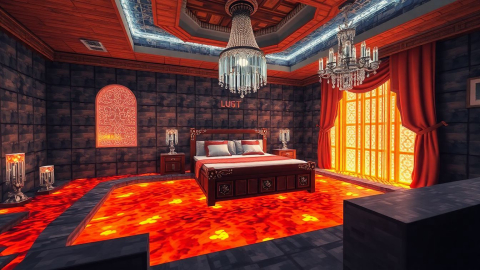Post-Modernism Interior Design: Embracing Eclecticism and Personal Expression
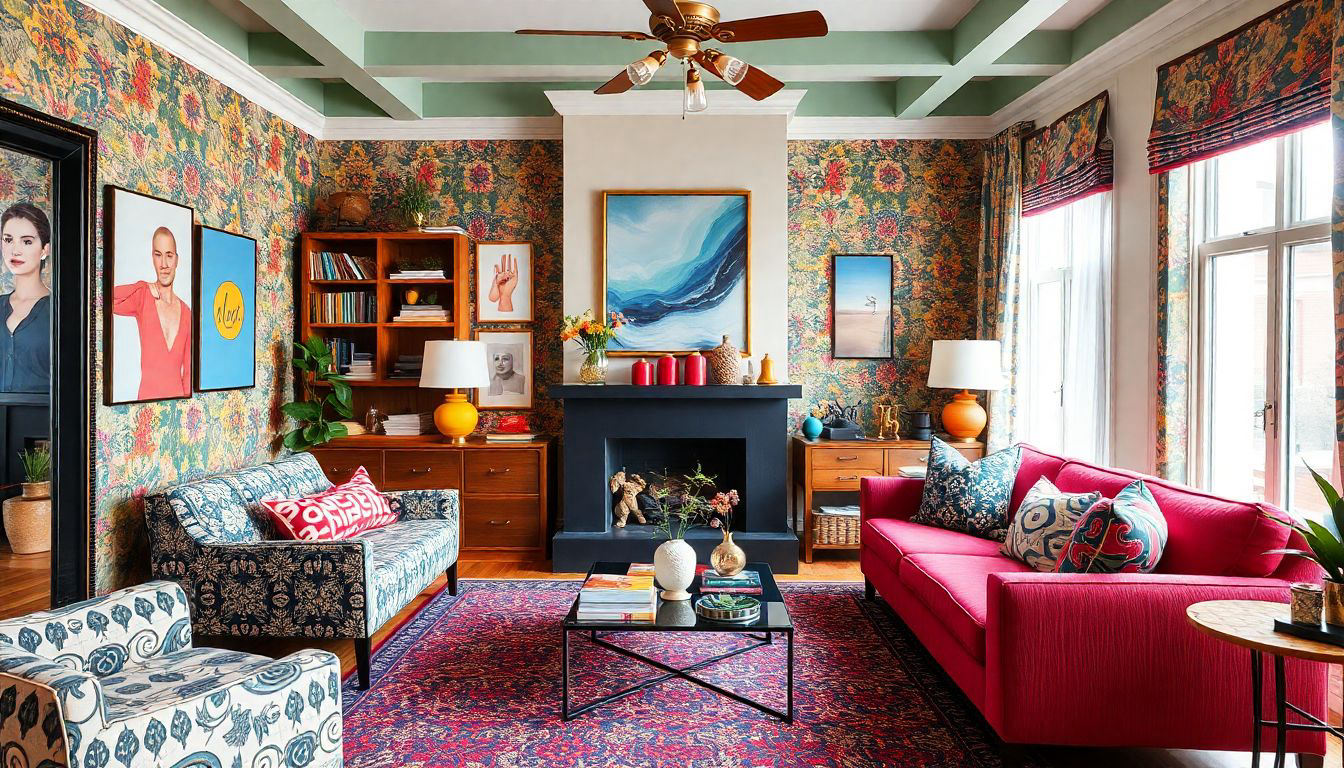
In the ever-evolving world of interior design, post-modernism has emerged as a vibrant and expressive movement that challenges the status quo. Born from a desire to break free from the rigid constraints of modernism, post-modern interior design celebrates eclecticism, personal expression, and a playful approach to aesthetics. This comprehensive exploration delves into the origins, characteristics, and contemporary applications of post-modernism in interior design, offering insights for both design enthusiasts and professionals alike.
The Rise of Post-Modernism: A Reaction to Minimalism
Post-modernism in interior design can be traced back to the late 1970s and early 1980s, emerging as a direct response to the dominance of modernism and minimalism. While modernism championed clean lines, functionality, and a "less is more" approach, post-modernism sought to inject personality, color, and a sense of fun back into living spaces.
Charles Moore, often referred to as the father of post-modernism, played a pivotal role in shaping this movement. As architect and educator Jeremiah Eck notes, Moore's work was characterized by "historical references, whimsical details, bright colors, high skylit spaces, and connecting pods." This departure from the austere aesthetics of modernism resonated with many who yearned for more personalized and expressive interiors.
The Memphis Group: Catalysts of Change
No discussion of post-modernism in interior design would be complete without mentioning the Memphis Group. Founded in 1980 by Italian architect Ettore Sottsass, this design collective revolutionized the industry with their bold shapes, bright colors, and unconventional approach to furniture and decor. The Memphis Group's influence can still be felt today, with many contemporary designers drawing inspiration from their fearless use of pattern and form.
Key Characteristics of Post-Modern Interior Design
Post-modern interior design is characterized by several distinct features that set it apart from other design movements:
1. Eclectic Mix of Styles
One of the hallmarks of post-modern design is its willingness to blend different styles, periods, and influences. As interior designer Hugh Long explains, "The idea of maximalism now also is kind of more of a personal approach, like you can take pieces that your client has had for years and work them into a scheme with the things that they have." This approach allows for a more personalized and unique interior that tells the story of its inhabitants.
2. Bold Colors and Patterns
In stark contrast to the neutral palettes favored by minimalism, post-modern interiors often feature vibrant colors and eye-catching patterns. Designer Nicole Crowder emphasizes this point, stating, "I like my furniture to feel like it's dressed, like it's going to present itself to the world." This fearless use of color and pattern creates spaces that are visually stimulating and full of energy.
3. Playful and Whimsical Elements
Post-modernism embraces a sense of humor and playfulness in design. This can manifest in unexpected shapes, oversized objects, or quirky decorative elements. The goal is to create interiors that are not only functional but also fun and engaging.
4. Emphasis on Texture and Materials
Post-modern interiors often feature a rich tapestry of textures and materials. From glossy surfaces to plush fabrics, the interplay of different tactile experiences adds depth and interest to a space.
5. Geometric Shapes and Forms
While modernism favored straight lines and simple forms, post-modernism embraces more complex geometries. Curved lines, asymmetrical shapes, and bold architectural elements are common features in post-modern interiors.
Incorporating Post-Modern Elements in Contemporary Spaces
For those looking to infuse their homes with post-modern flair, there are several approaches to consider:
1. Start with Statement Pieces
Introduce post-modern elements gradually by incorporating statement pieces into your existing decor. This could be a bold, sculptural chair or an eye-catching light fixture that serves as a focal point in the room.
2. Experiment with Color
Don't be afraid to introduce bold colors into your space. As designer Audrey Scheck suggests, "A neutral base allows for even more flexibility to introduce color through fun accents like artwork, textiles, and decorative accents." Start with colorful throw pillows or artwork before committing to larger pieces or painted walls.
3. Mix and Match
Embrace the eclectic nature of post-modernism by combining different styles and periods. Pair a vintage mid-century modern sofa with contemporary artwork and post-modern lighting for a truly unique look.
4. Incorporate Geometric Patterns
Introduce geometric patterns through wallpaper, rugs, or textiles. These bold designs can add visual interest and a distinctly post-modern touch to any room.
5. Embrace Curves
Soften the lines in your space by incorporating curved furniture or architectural elements. The Camaleonda sofa, designed by Mario Bellini in the 1970s and recently reissued, is a perfect example of post-modern curves in action.
The Sustainability Angle: Post-Modernism's Unexpected Eco-Friendly Side
While post-modernism might seem at odds with the current focus on sustainability in design, there's an argument to be made for its eco-friendly potential. Diana Budds of Curbed suggests that "The greenest thing you can have is something that you can use for a long time. That's what I would say the anti-consumerist element of maximalism is: You can have all of these things and figure out a way to make it work for you instead of trying to copy this impossibly austere image."
By encouraging the use of existing pieces and promoting a more personal approach to design, post-modernism can actually support a more sustainable lifestyle. It's about creating spaces that reflect the individual rather than adhering to fleeting trends, potentially reducing the need for frequent redecorating.
The Future of Post-Modern Interior Design
As we look to the future, it's clear that post-modernism will continue to evolve and influence interior design. The movement's emphasis on personal expression and eclecticism aligns well with contemporary values of individuality and self-expression.
Moreover, as designer Annika Hansteen-Izora points out, post-modernism offers a way to challenge the status quo and create more inclusive spaces. "I'm a very loud and a very vibrant person, and I didn't see myself in minimalism," she explains. "Minimalism is this idea that you're reducing something to its necessary elements, and I wanted to ask the question, well, who is deciding what is necessary?"
Conclusion: Embracing the Spirit of Post-Modernism
Post-modernism in interior design is more than just a style; it's a philosophy that encourages personal expression, creativity, and a break from conventional norms. By embracing its principles, we can create spaces that are not only visually striking but also deeply personal and meaningful.
As we continue to navigate the complexities of modern life, post-modernism offers a refreshing approach to our living spaces. It reminds us that our homes should be a reflection of our unique personalities and experiences, rather than a carbon copy of a magazine spread or social media post.
Whether you're a design professional or a homeowner looking to refresh your space, consider incorporating elements of post-modernism into your interiors. Embrace color, mix styles with abandon, and don't be afraid to let your personality shine through. After all, in the world of post-modern design, there are no rules – only endless possibilities for creativity and self-expression.
References and Further Reading
- What the Hell is Postmodernism?
- The Ultimate Guide to Postmodern Design and Decor
- More Lessons From the Father of Postmodernism, Charles Moore
- 21 of the Most Gorgeous, Unique Modern Home Designs
- Home design has gotten overstuffed, garish, and glorious. Good!
- Memphis by the sea: reinventing a Hastings home
- Interior Design Trends for 2021
- 9 Contemporary Interior Design Tips You Haven't Heard Before
- Seven deadly sins of dated decorating
More Articles
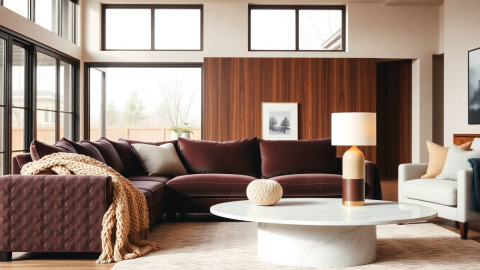
Living Room Interior Design Trends 2024: A Bold New Era of Comfort and Style
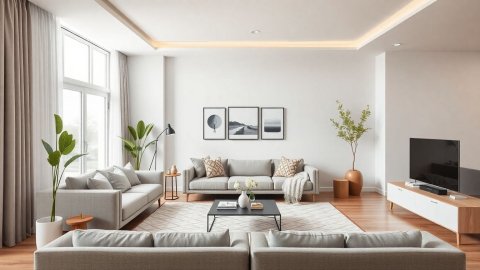
The Art of Less: A Humorous Guide to Minimalist Interior Design
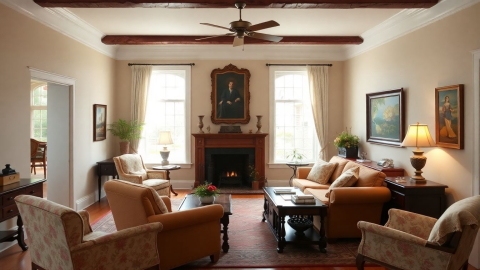
The Timeless Charm of American Colonial Interior Design: A Comprehensive Guide

Exploring Interior Design Salaries: Trends, Factors, and Career Prospects
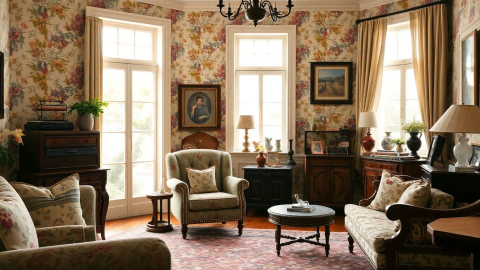
Grandmillennial Style: When Granny Chic Meets Millennial Sass
